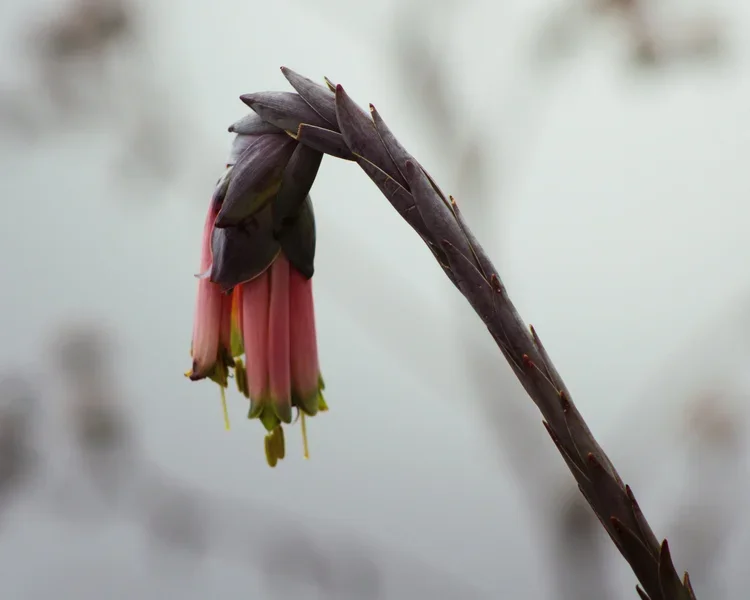Along the Stone Steps
This photo I captured is of a blossoming flower seen along the 1,600 stone steps leading to the top of Machu Picchu Mountain in Peru. Unfortunately, I have no idea what type of flower it is. I’ve done attempted to do some Google Lensing on the image in hopes to identify it, but I couldn’t find anything concrete enough to label it and feel comfortable. This flower, along with several others, caught my eye due to the vibrant colors contrasting the overwhelming green of the jungle plants lining the steps up the mountain. I picked this flower picture over the others due to how unique and almost alien it looks. The way the stem appears to have scales and how the blooming flower is hatching from its casing. I also particularly like the angle the picture was taken! Now whether that was intentional, or luck is up for you to decide.
This trip was the first time I had packed my camera and set out with the intention of taking as many pictures as my heart desired. With little to no experience, I set out with my wife to capture things I found beautiful or unique for our first time in Peru. Although I didn’t have my camera with me for every experience, when I did, I was obsessed with trying to capture what I was seeing. It was an interesting experience to be seeing so much with my eyes and then trying to translate those sights to a focused or condensed field of view. It was a learning experience to say the least. Our eyes can see so much in our peripheral view and then to hold the camera up and only be able to capture a fraction of that was difficult, almost frustrating. With learning that I pivoted to trying to capture more focused photos, similar to this flower photo.
I started with my Canon kit lens (Canon EF 18-55mm) to capture some landscape pictures of Machu Picchu but quickly switched to my Canon EF 75-300mm zoom lens. I really enjoyed the ability to capture sharper images of subjects from a distance. The smaller kit lens has its perks for capturing wide landscape or close shots of subjects I was able to be close to, but I noticed that the wider shots were harder to discern the focal subject. I’m sure I’ll look back at this post and the pictures mentioned with more knowledge and laugh, but for now these are some of the things I’m favoring. I’ve read a few blogs and articles about types of lenses for nature and wildlife photography and several times I’ve read that you will rarely have “too much lens.” While I can see why that is mostly true, I’ve found it more common of an issue than I expected. I’m sure there are several factors as to why I’m running into having too much lens with my 300mm, but currently I don’t have the knowledge. I’ll have to do some research and figure out what features of my equipment are causing these limitations, but for now and this post it will remain a mystery.
Speaking of features (and limitations)! During this trip my camera was set to AF (Autofocus) for most shots as well as bouncing between the preset landscape, portrait, and (Flower/close up?) settings. Recently I’ve branched out to manual focus and regret not having practiced with manual before or during this trip. Although I used AF for this trip, I managed to take some decent photos! (In my humble opinion, of course) Using AF as a beginner was nice because it allowed me to just point and shoot. Unfortunately, AF provides no real control over your images and prevents you from capturing your vision. Even as a beginner myself, I would highly recommend taking the time to practice and understand manual shooting. Live and learn, I suppose.
I’ll share more photos from this trip and my progress as I continue to take photos! I’ve really fallen in love with photography and am always looking to broaden my knowledge and skills. I am ecstatic to see what the future holds and what I will be able to capture through my lens! Until the next one - Barrett


